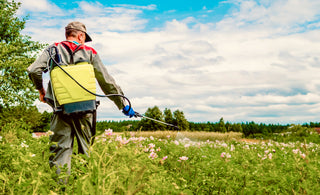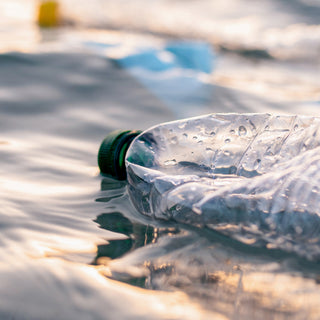
Does BOROUX Filter Pesticides?
Yes, BOROUX filters pesticides to below lab detectable limits. See the test results!
What are Pesticides?
Pesticides are substances used to control or eliminate pests such as insects, weeds, and fungi in agricultural, industrial, and residential settings. They are used in agriculture, forestry, public health, and residential settings to protect plants, structures, and public health. Pesticides can be synthetic chemicals or derived from natural sources such as plants (botanical pesticides) or microorganisms. While they are essential tools for maintaining crop yields and protecting public health, their use must be carefully managed to minimize risks. Regulatory agencies in many countries establish guidelines and regulations for the production, sale, and application of pesticides to ensure safe and effective use.
There are several types of pesticides; insecticides herbicides, fungicides, rodenticides, bactericides, larvicides, and nematicides. Each used specifically for certain targeted pests to prevent damage, diseases from spreading, spoilage, and other harm.
How Do Pesticides Get into Tap Water?
Pesticides can enter tap water through various routes, including agricultural runoff, improper disposal, and leaching from contaminated soil into groundwater. Surface water sources like rivers and lakes can also be contaminated by pesticide runoff. This contamination can occur in reservoirs or lakes used as water sources for municipal treatment plants. Despite water treatment efforts, some pesticides may persist in treated water due to their resistance to conventional treatment methods, posing potential health risks. Consumers in areas with intensive pesticide use should consider additional filtration methods.
Why Pesticides Should Be Filtered?
Filtering pesticides from tap water is vital to minimize potential health risks associated with their consumption. Prolonged exposure to pesticides has been linked to various health issues, underscoring the importance of their removal.
Health Risks
- Neurological Disorders: Prolonged exposure to pesticides may lead to neurologic disorders and impair cognitive functions.
- Cancer Risk: Certain pesticides are associated with an increased risk of cancer, including leukemia and non-Hodgkin lymphoma.
- Endocrine Disruption: Pesticides can disrupt the endocrine system, potentially affecting hormonal balance and reproductive health.
- Respiratory Problems: Some pesticides may cause respiratory issues and worsen pre-existing respiratory conditions.
How BOROUX Filters Pesticides
BOROUX water filters use advanced techniques to effectively reduce pesticides from tap water. The filtration process involves multiple stages to ensure comprehensive reduction of pesticide contaminants. Activated carbon filtration is one of the primary methods employed, where activated carbon efficiently adsorbs pesticides, trapping them and preventing their passage through the filter. Ion exchange and chemical adsorption are also utilized to attract, capture, and adsorb pesticide molecules. By using these combined filtration methods, BOROUX ensures a better water supply by significantly reducing pesticide levels in tap water.
List of Pesticides Tested for BOROUX Filtration Capability
- Linuron (3-(3,4-dichlorophenyl)-1-methoxy-1-methylurea) is a phenylurea herbicide that is used to control the growth of grass and weeds.
- Metolachlor is one of the widely used herbicides on corn in Minnesota, and is also labeled for use on soybeans, potatoes, sugar beets, sunflowers, and tomatoes.
- Alachlor is a chloroacetanilide type herbicide with restricted usage for preemergent control of grasses and broadleaf weeds.
- Atrazine is a chlorinated triazine systemic herbicide that is used to selectively control annual grasses and broadleaf weeds before they emerge.
- Carbofuran is a systemic, broad spectrum N-methyl carbamate insecticide and nematicide registered for control of soil and foliar pests on a variety of field, fruit, and vegetable crops.
- DEET (N,N-diethyl-meta-toluamide) is the active ingredient in many repellent products. It is widely used to repel biting bugs.
- 2,4-D is a widely used herbicide that controls broadleaf weeds. It is used in many places including turf, lawns, rights-of-way, aquatic sites, forestry sites, and a variety of field, fruit and vegetable crops.
- Dibromochloropropane (DBCP) is a pesticide used against nematodes (roundworms or threadworms) that damage pineapples, bananas and other tropical fruits.
- 1,4-Dichlorobenzene It is used as a fumigant to control mildew and mold, and as an insecticide.
- p-Dichlorobenzene (PDCB) is used as a repellant against snakes, rats, mice, squirrels, bats and insects, as a deodorizer for toilets, urinals and diaper pails, as an insecticidal fumigant, and as an air freshener.
- 1, 3-dichloropropene is a Restricted Use Pesticide (RUP) used to kill nematodes, insects, and weeds on potatoes, flower bulbs and other vegetable and orchard crops.
- Dinoseb is an herbicide that was once widely used for weed-control when producing crops like soybeans, vegetables, fruits and nuts, or citrus.
- Endrin was used as a pesticide to control insects, rodents, and birds.
- Ethylene dibromide (edb) was used to control insects in stored products, on fruits and vegetables, in flour mills, and in soil. EDB was also used as an ingredient in gasoline.
- Bromochloroacetonitrile is a by-product of trichloroacetic acid production, which is used in the manufacture of plastics, herbicides and pesticides.
- Heptachlor is a manufactured chemical that was used in the past for killing insects in homes, in buildings, and on food crops.
- Heptachlor epoxide is an insecticide that can be used only for controlling fire ants in power transformers.
- Hexachlorocyclopentadiene is an organochlorine compound that is used as a raw material in manufacturing other chemicals, including pesticides, flame retardants, resins, dyes, pharmaceuticals, plastics, etc.
- Lindane is used as an insecticide on fruit and vegetable crops, for seed treatment, in forestry, and for livestock and pet treatment.
- Methoxychlor is used as an insecticide against flies, mosquitoes, cockroaches, chiggers, and a wide variety of other insects.
- Simazine is an herbicide of the triazine class. The compound is used to control broad-leaved weeds and annual grasses.
- 2,4,5-TP (silvex) was as a postemergence herbicide for control of woody plants, and broadleaf herbaceous weeds in rice and bluegrass turf, in sugarcane, in rangeland improvement programs, on lawns.
- 1,2,4-Trichlorobenzene is used in heat transfer fluids, as a dielectric fluid, and in making chemicals, insecticides and fungicides.
- Chlorodibromomethane has been used as a chemical intermediate in the manufacture of fire extinguishing agents, aerosol propellants, refrigerants and pesticides.



